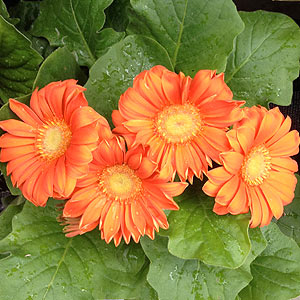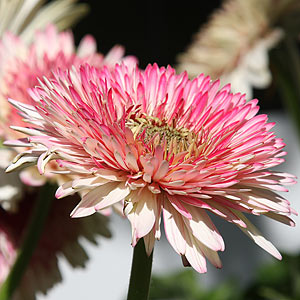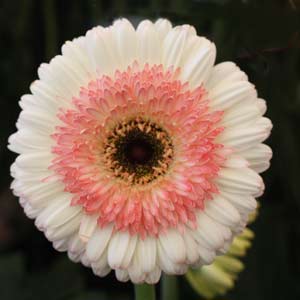
The Gerbera daisy does indeed have have ‘daisy like’ flowers but it is a different species. Modern cultivars have flowers from all parts of the spectrum whites, reds, yellows and orange.
Gerberas can be treated as annuals or perennials depending on the climate.
So when you look at the tag, consider where you live, in colder zones, annuals, warmers areas, perennials and in the middle tender perennial.
Originally from South Africa, Gerberas are actually a fairly hardy plant given the right growing conditions. In warmer conditions these fantastic flowering plants can be grown in the garden as a perennial, in cooler areas they are best grown in pots and treated as ‘indoor plants’ or annuals.

The Gerberas we see for sale are mostly hybrids, crosses between Gerbera viridifolia which has cream to mauve flowers and and Gerbera jamesonii with its pink, orange to red flowers.
In the garden they will reach around 1 foot (30 – 40 cm) in height and with tall stems make excellent flowers for picking.
In Victorian England breeders began experimenting with cross pollination and we now have the extravagant and colorful Gerberas we know today, and as for cultivars, new ones every year. And yes they are very popular both as cut flowers and wedding flowers
Care

Consider the natural environment of these plants and basic care is simple, well drained soil and plenty of sun.
In zones 8-11 they can be grown as perennials, however to overwinter in the colder parts you will need to protect with some mulch.
Both factors are essential, it is also important that if you are transplanting or dividing Gerberas that the crown is not buried, this will cause it to get to wet and rot, one of the most common problems. When in full growth feed with a quick release fertilizer.
You can deadhead Gerberas to promote a second flush of flowers.
Growing Gerberas Indoors
And yes you can grow Gerberas in pots or containers.
If you are growing indoors try a sunny window sill, or an enclosed patio.
However new plants will need to be acclimatised before placed in full sun.
Problems
Most problems with gerberas are related to lack of sun, to much moisture and cold temperatures. These include :
- Powdery Mildew
- Gray Mold (Botrytis blight)
- Crown Rot
The best remedy for all is good air circulation, good drainage and plenty of sun.
Try not to mulch around the stems to much as this can cause humidity and this causes the diseases.
Water plants in the morning and avoid watering the foliage, this allows them to dry out in the sun during the day.

